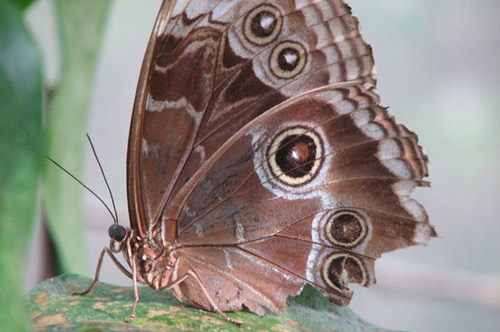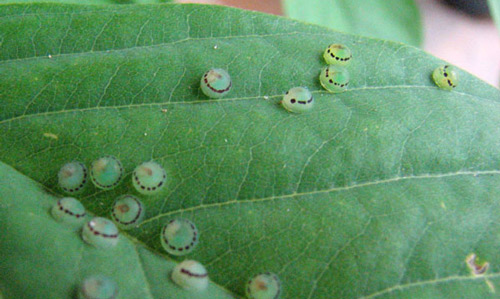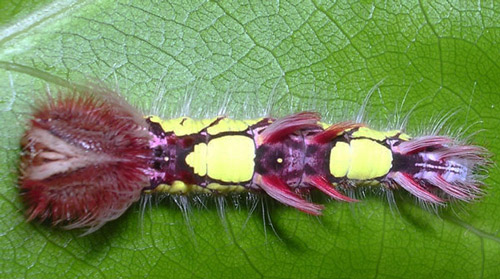Butterflies are some of the most beautiful of God’s insects. So today I will be running you through the life-cycle, some interesting butterfly facts, and my favourite butterfly and why.
Like many forms of animal life, butterflies start as an egg. When they hatch, they are in the first of four stages: Egg, Caterpillar, Pupa, and Butterfly. The Eggs are laid on leaves, which will later become their food. The adult butterflies will lay many eggs, but not all of them will survive.

When that egg hatches out comes a small caterpillar. They will eat leaves and grow in size. Many caterpillars are poisonous and dangerous if touched or eaten. Caterpillars are quite amazing. They have around 4000 muscles whereas humans only have 650. The caterpillar will eat a lot because it is their only job. Some can eat up to 27,000 times their body weight in the lifetime of that stage. They also grow a lot. Some will grow 100 times their original size. They will shed their skin once they grow out of it. Here is a quote from:

“Caterpillars can grow 100 times their size during this stage. For example, a monarch butterfly egg is the size of a pinhead and the caterpillar that hatches from this tiny egg isn’t much bigger. But it will grow up to 2 inches long in several weeks.”
Though caterpillars are very weak, they do have some good defences against their predators. That includes poison, camouflage, and eyes.
Many varieties of caterpillars are poisonous. They warn their predators by having very bright colours. Other caterpillars are camouflaged. Some look like leaves, bark, and bird poop. And some caterpillars and butterflies use an eye design on them to look like they are watching you. And many species will not attack anything if it is watching them.

Once those caterpillars get to their full size and have stored up a lot of body fat, they go to the next stage called a Pupa. A pupa is also known as a chrysalis, which in my opinion sounds much better. The chrysalis is made of a silk-like web that the caterpillar wraps into a cocoon around its self. Hang from leaves and sticks in trees, and many of them camouflage very well with their environment. They are formed out of a thick glue-like material that comes out of two separate glands. The chrysalis is only big enough to cover the caterpillar’s transforming body. However, the skipper butterflies make much larger cocoons.
Chrysalis’ can be many different shapes, sizes and colours, depending on the species.

The length of the pupa stage can be from a few weeks to two years depending on the species. Though most are from a few weeks to a few months.
While inside the chrysalis, many changes are happening to the caterpillar. As you can probably tell, there is a big difference from the long, fat, muscular caterpillar, to a slender, thin-winged, multi-coloured butterfly.
Once the newly transformed butterfly cuts out of the chrysalis, it must do a few things before it can fly away and do all of the things you see butterflies doing. First, it starts pumping its wings. That gets body fluids into their wing veins to harden them. They also must assemble their new mouth. It is not like the mouth of a caterpillar, it is like a long straw that they can roll in and out when they want to drink nectar. The long straw is called a proboscis.
After those steps, the butterfly is ready to take off. The butterfly must drink from flowers, and mud puddles to get the nutrients that they need. The nectar from flowers gives them sugar and energy for their flight, and the mud puddles give them minerals. When they land on a flower they are actually able to taste it with their feet. Some species even drink sap and carrion.
Here is a very interesting fact that I found from thoughtco.com.
Within about 10–12 feet, butterfly eyesight is quite good.4 Anything beyond that distance gets a little blurry, though. Despite that, butterflies can see not just some of the colours that we can see, but also a range of ultraviolet colours that are invisible to the human eye. The butterflies themselves may even have ultraviolet markings on their wings to help them identify one another and locate potential mates. Flowers, too, display ultraviolet markings that act as traffic signals to incoming pollinators like butterflies.
thoughtco.com
There are thousands of different butterflies all around the world. And each of these have unique shapes, colours, wing shapes, habitats, and other features. But what is really cool is when you look at a butterfly, it is more than what you just see. That butterfly has so many different stages, and each of those stages are unique in their own.
My two favourite butterflies are the Monarch, and Anna’s eighty-eight butterfly (Diaethria anna).
They are not the most colourful butterflies, but they have very cool designs. Anna’s eighty-eight butterfly looks like a race-car design to me. And on the inside, they have a very pretty blue line.


Monarch butterflies are absolutely beautiful. They have orange and yellow wings that have black lines and designs going throughout the wings.
Their inner wings are the same as their outer wings, and the vibrant colour reminds predators that they are poisonous. The caterpillar is striped vertically with white, yellow, and black. The egg has ribs going from the base up to the blunt point, and those ribs are bumpy.
The monarch has a very interesting migratory pattern, from the northern USA and southeastern Canada to Mexico for the winter. That is where they will hibernate for the winter until it gets warmer up north. They hibernate in forests where thousands of them will settle on trees and branches.

Then they will do that long journey again back to Canada and Northern USA and lay their eggs. Once they do that they will die. Monarchs are the only insect that travels over 2,500 miles every winter on average.
My third favourite butterfly is the Blue Morpho, but the monarchs have so many cool things that I like them more. The Blue Morpho is also a blue butterfly, and very beautiful. In addition to the bright blue on the inner wings, it has two of the defence mechanisms that I mentioned before. Eyes and Camouflage.





In conclusion, butterflies and caterpillars are some of the most interesting and beautiful creatures in the world. They have some of the craziest skills, abilities and facts, like migrating 3000 miles to Mexico, or that caterpillars have 6000 eyes. Even though people tend to just like them for their colours, there are still a tonne of cool and interesting facts to learn about them.
The websites that I used for information are linked below.
https://www.thoughtco.com/fascinating-facts-about-caterpillars-1968169
https://www.thoughtco.com/fascinating-facts-about-butterflies-1968171
https://www.suburbanexterminating.com/blog/post/10-fascinating-facts-about-butterflies/
To Oliver https://creativeskate.wordpress.com/2021/11/05/to-all-my-friends-and-followers/
LikeLike